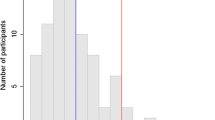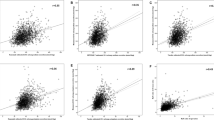Abstract
Methods for efficiently identifying subjects with constantly acidic pH in epidemiological and clinical studies have not been assessed. We recruited 30 volunteers to estimate the minimum number of urine pH measurements using pH strips needed to identify subjects with “constantly acidic urine pH” Spearman’s correlation coefficients between urine pH measured with a pH meter and with the four pH strips ranged from 0.94 to 0.95 (p < 0.001 for all four strips). Overall agreement within ±0.5 pH units between the four strips and the pH meter ranged from 62.2% to 74.4%. When using a spot urine sample from a single morning to classify participants with respect to their urine pH, 80% of individuals fell into the acidic urine pH (pH equal to or lower than 6.0) group. When we required subjects to have urine pH equal to or lower than 6.0 in six consecutive AM spot urine samples and seven spot PM urine samples, only 20% of participants fulfilled this criterion. Measuring urine pH twice a day (early in the morning and early in the evening) during four consecutive days classified individuals in the same way as two daily measurements for one week. A single pH measurement from a spot urine sample is not reliable to identify individuals with constantly acidic pH. Morning and evening urine pH measurements with pH strips during four consecutive days identify individuals with constantly acidic urine pH individuals as well as one week of measurements, and thus might be useful to identify subjects with constantly acidic urine pH in epidemiological and clinical studies.
Similar content being viewed by others
References
Kadlubar FF, Miller JA, Miller EC (1977) Hepatic microsomal N-glucuronidation and nucleic acid binding of N-hydroxy arylamines in relation to urinary bladder carcinogenesis. Cancer Res 37:805–14
Babu SR, Lakshmi VM, Hsu FF, Zenser TV, Davis BB (1995) Glucuronidation of N-hydroxy metabolites of N-acetylbenzidine. Carcinogenesis 16:3069–074
Babu SR, Lakshmi VM, Huang GP, Zenser TV, Davis BB (1996) Glucuronide conjugates of 4-aminobiphenyl and its N-hydroxy metabolites. pH stability and synthesis by human and dog liver. Biochem Pharmacol 51:1679–685
Kadlubar FF, Dooley KL, Teitel CH, et␣al. (1991) Frequency of urination and its effects on metabolism, pharmacokinetics, blood hemoglobin adduct formation, and liver and urinary bladder DNA adduct levels in beagle dogs given the carcinogen 4-aminobiphenyl. Cancer Res 51:4371–377
Rothman N, Talaska G, Hayes RB, et␣al. (1997) Acidic urine pH is associated with elevated levels of free urinary benzidine and N-acetylbenzidine and urothelial cell DNA adducts in exposed workers. Cancer Epidemiol Biomarkers Prev 6:1039–042
Groos E, Walker L, Masters JRW (1986) Intravesical Chemotherapy — studies on the relationship between Ph and cytotoxicity. Cancer 58:1199–203
Manthey DE, Teichman J. Nephrolithiasis. Emerg Med Clin North Am 2001; 19:633–54, viii
Murayama T, Taguchi H (1993) The role of the diurnal variation of urinary pH in determining stone compositions. J Urol 150:1437–439
Murayama T, Sakai N, Yamada T, Takano T (2001) Role of the diurnal variation of urinary pH and urinary calcium in urolithiasis: A study in outpatients. Int J Urol 8:525–31
Free AH, Free HM (1972) Urinalysis, critical discipline of clinical science. CRC Crit Rev Clin Lab Sci 3:481–31
Heuter KJ, Buffington CA, Chew DJ (1998) Agreement between two methods for measuring urine pH in cats and dogs. J Am Vet Med Assoc 213:996–98
Lott JA, Johnson WR, Luke KE (1995) Evaluation of an automated urine chemistry reagent-strip analyzer. J Clin Lab Anal 9:212–17
Nappert G, Naylor JMA (2001) comparison of pH determination methods in food animal practice. Can Vet J 42:364–67
Raskin RE, Murray KA, Levy JK (2002) Comparison of home monitoring methods for feline urine pH measurement. Vet Clin Pathol 31:51–5
Elliot JS, Sharp RF, Lewis L (1959) Urinary pH. J Urol 81:339–43
Remer T, Manz F (1995) Potential renal acid load of foods and its influence on urine pH. J Am Diet Assoc 95:791–97
Remer T (2000) Influence of diet on acid–base balance. Semin Dial 13:221–26
Efron B, Tibshirani RJ (1993) An introduction to the bootstrap. Monographs on Statistics and Applied Probability. Vol. 57. New York, NY, Chapman & Hall
Emde C, Hopert R, Riecken EO (1989) Basic principles of pH registration. Neth J Med 34:S3–S9
Michaud DS, Troiano RP, Subar AF, et␣al. (2003) Comparison of estimated renal net acid excretion from dietary intake and body size with urine pH. J Am Diet Assoc 103:1001–007
Niv Y, Fraser GM (2002) The alkaline tide phenomenon. J Clin Gastroenterol 35:5–
Author information
Authors and Affiliations
Corresponding author
Rights and permissions
About this article
Cite this article
Alguacil, J., Pfeiffer, R.M., Moore, L.E. et al. Measurement of urine pH for epidemiological studies on bladder cancer. Eur J Epidemiol 22, 91–98 (2007). https://doi.org/10.1007/s10654-006-9101-2
Received:
Accepted:
Published:
Issue Date:
DOI: https://doi.org/10.1007/s10654-006-9101-2




